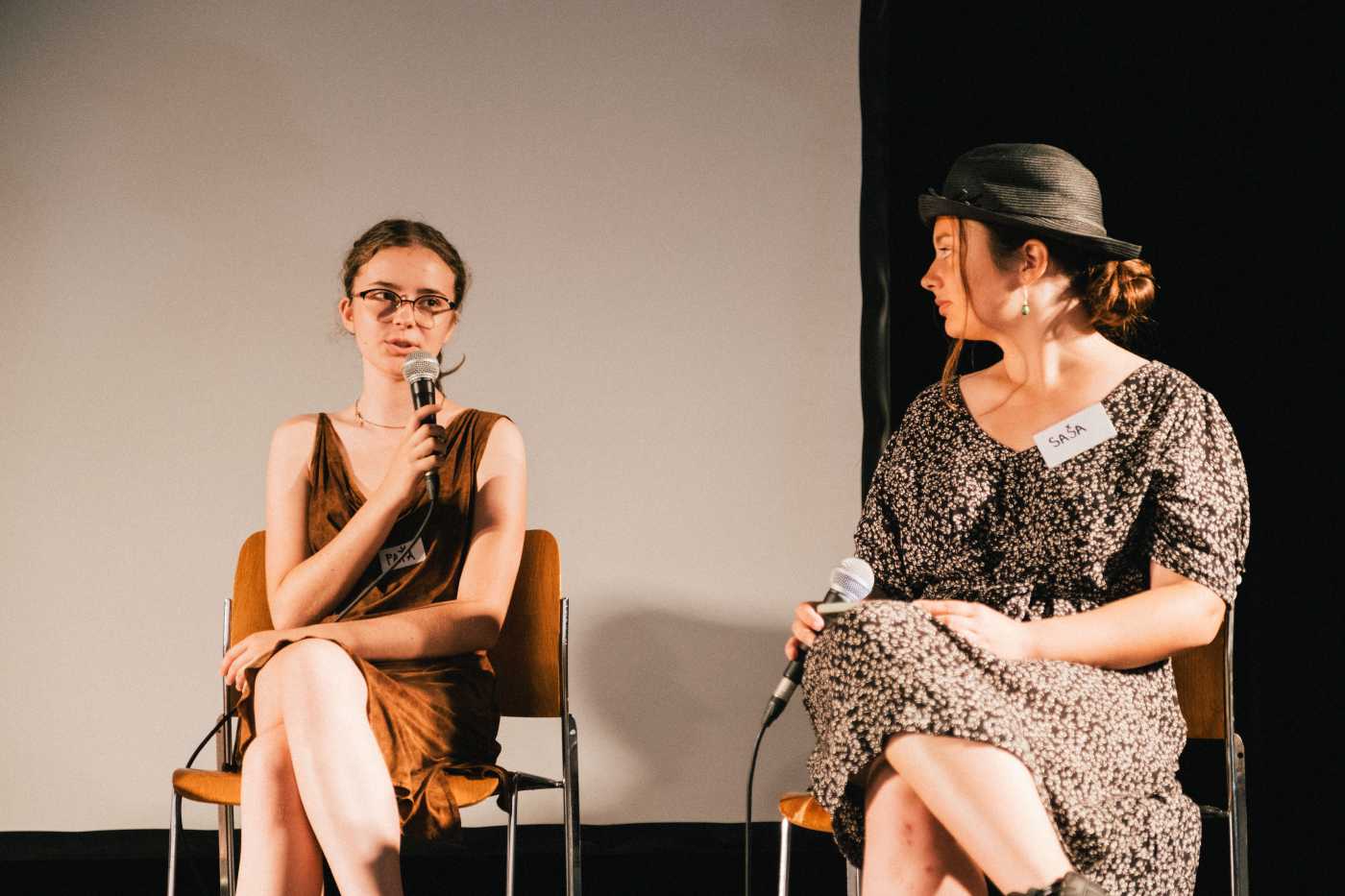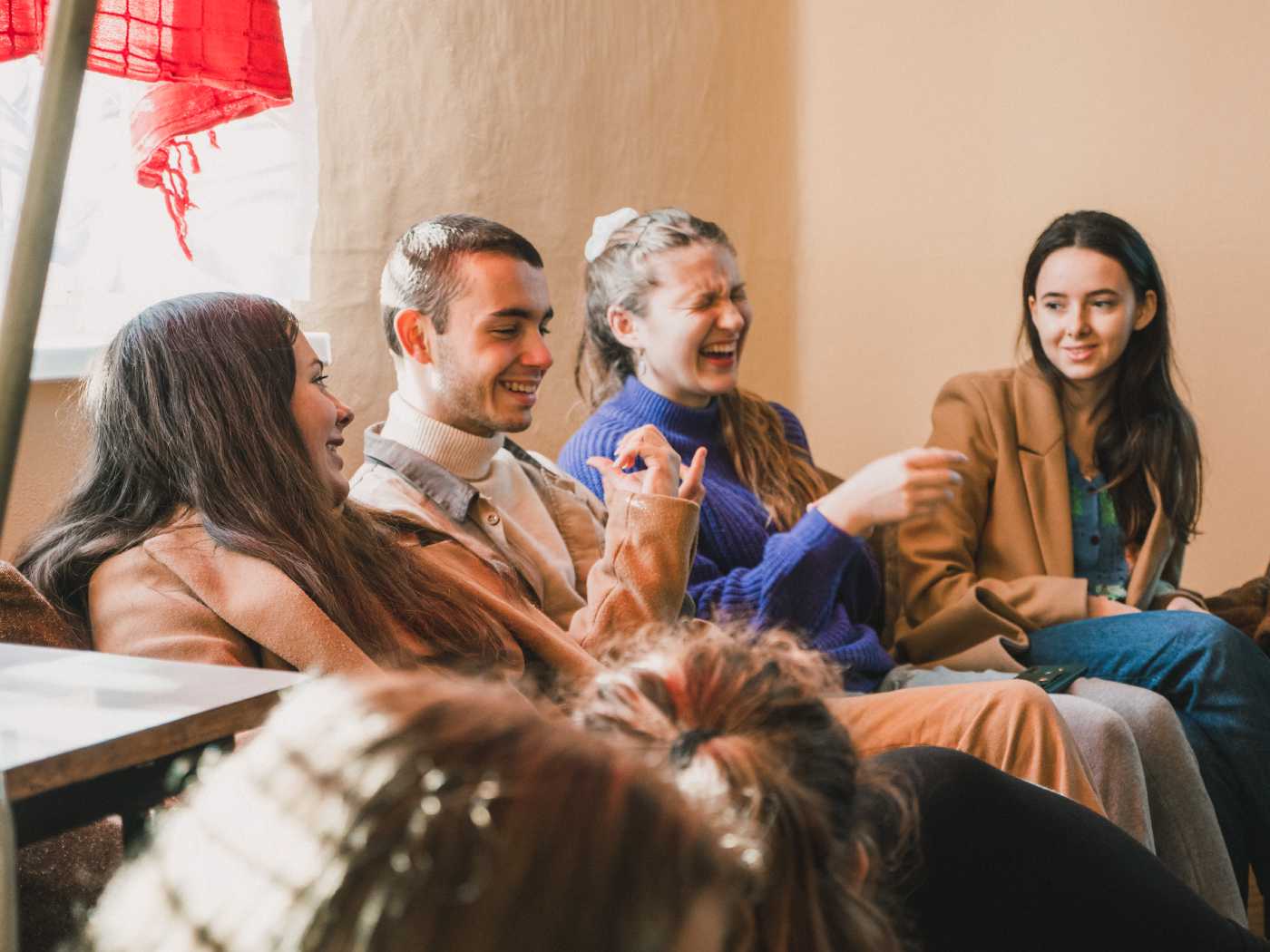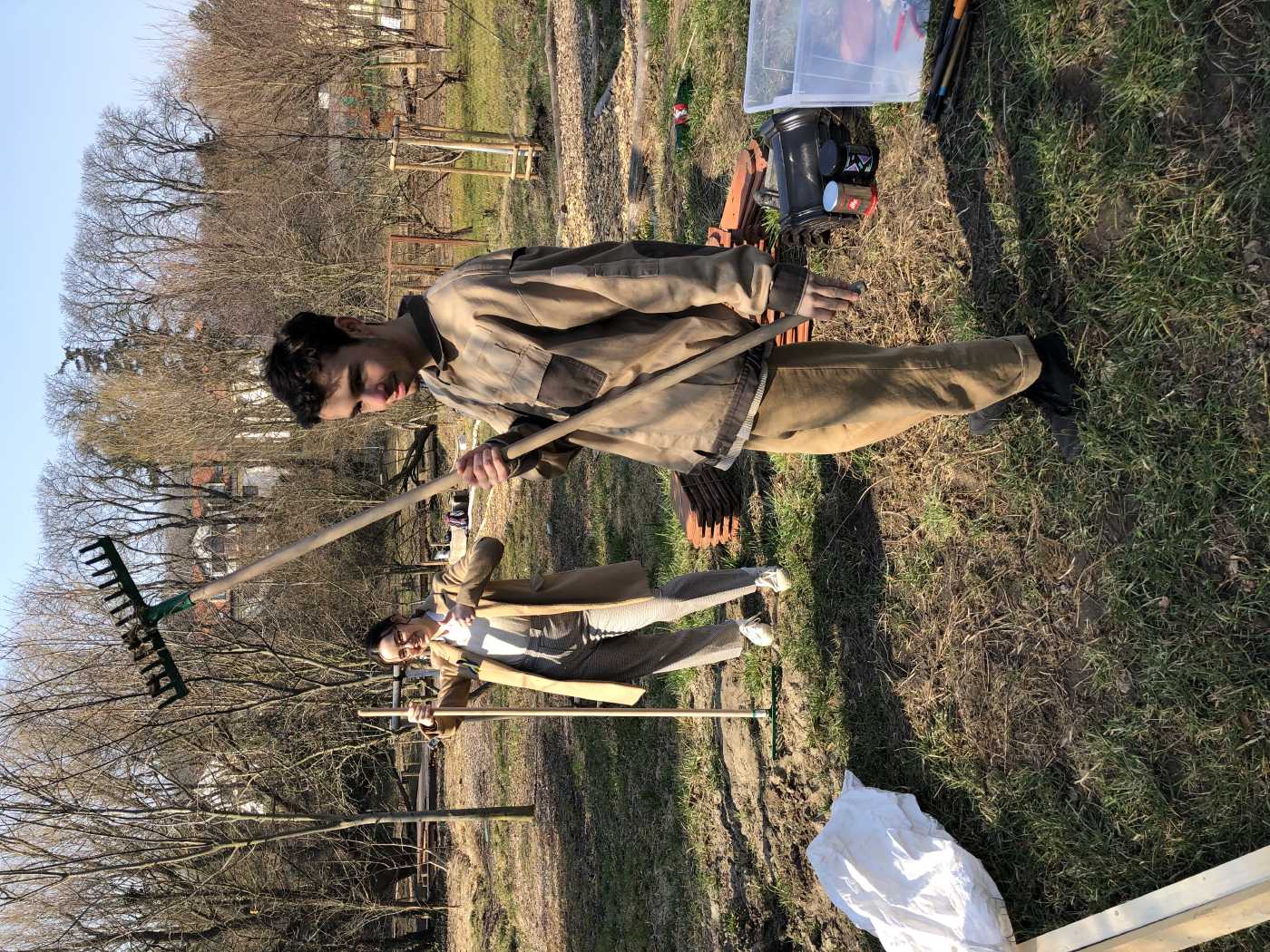Participative Environmental Education in Slovakia
An Asymmetrical Image
Slovak environmental education (EE) has a long tradition and takes on diverse forms with multiple excellent participatory examples, such as the ones you can read about in this publication. Its importance is recognised in several sectoral strategic and policy documents. A high-profile example is the Country’s environmental strategy, which envisions “all learners receiving the knowledge and skills necessary to promote sustainability by 2030.” Unfortunately, actions speak louder than the words written down on a paper, and a plan to achieve this ambitious goal remains non-existent. On the ground, the bigger picture of EE is unbalanced.
EE is a so-called a transversal topic within the formal school system, and schools can choose to implement it in three forms. Schools can either create a standalone subject or choose to infuse it across all subject areas, the latter being the more prevalent case. EE can also be taught through one-off or continuous school projects and seminars.1 Schools may also designate an environmental coordinator amongst their staff; however, since there is no official description of what their roles and responsibilities entail, their activities are generally intuitive and often dependent on personal motivation or school leadership sympathies for the topic.

Elementary schools tend to engage with EE more often and more actively. Compared to high schools, they organise more environmentally-themed extracurricular activities, such as after-school clubs. Still, not all environmental topics receive equal attention. By far, the most popular themes are waste and nature conservation, whereas sustainable development and soil degradation are the least represented.2 While about one-fifth of teachers touch on climate change, only around one-tenth of them engage with biodiversity loss or environmental activism. Given that all these themes are vitally linked and mutually dependent, omitting some of them and their connections may put an understanding of the bigger picture in danger. The culprits may be a combination of factors, such as insufficient interdisciplinary teacher training, or a limited-time allocation for transversal topics.
The civic environmental engagement of young Slovaks also varies, perhaps not surprisingly, in favour of simple activities that require little effort. A recent representative survey by the Slovak Youth Council and Green Foundation shows that only around half of Slovak youths engage in signing online petitions; only 28 per cent have voted in elections based on the candidate’s environmental agenda; nine per cent have participated in protests; and a similar lower share have organised their own actions. The survey points to a dislike for public engagement as one of the most prominent barriers.3

Many EE proponents see hope for improvement in the current school reform that aims to transform the form and content of elementary education (ISCED 1 & 2). One of the aspirational goals therein is to strengthen EE and climate change education, and to ensure that students act with nature protection and sustainability values in mind.4 We have yet to see if this reform will succeed in promoting all the systemic, interrelated components of EE and motivating environmentally positive actions. The first students undergoing the entire reformed elementary school cycle will graduate in mid-2030; but this does little to address the urgency of environmental issues today. This is further compounded by the fact that it remains unknown whether or not high schools will also undergo a similar reform.
The non-formal EE landscape is shaped by a rich palette of non-governmental environmental education providers, and many of them have been active over the past decades. These providers offer country-wide programs, such as Živica with their Green Schools network, while others are more improvised and localised. Still, the EE coverage is more concentrated in cities and the western part of the Country.
EE in Slovakia has developed organically, driven forward mainly by the passion and commitment of non-governmental organisations, as well as a few governmental and municipal officers and scholars. These committed organisations and individuals are generally well-networked and often join forces; for example, the “Špirála” network of environmental education providers unites non-governmental and academic actors to advocate for improving the overall EE system, such as in the ongoing educational reform process. The Slovak Environment Agency brings together many EE stakeholders, including Governmental, NGO, and municipal representatives, to create an EE quality assurance scheme. This working group has recently completed the web platform, EWOBOX, which is a one-stop shop for EE news and learning materials. Still, a more coordinated approach, rooted in a cross-sectoral and participative EE strategy and action plan, could bring Slovak environmental education to a whole new level.
Participative approaches in the educational system in your country
The idea of participative approaches, in which the teacher is more of a guide on the side and less of a sage on the stage, is generally welcome in Slovakia, but translating it into practice proves to be more complicated. One reason may be a lack of a common understanding of what student participation represents and the fact that it can have many forms.
Effective learning environments are built on co-agency, where students, teachers, parents, and the community work together. In 2018, a group of students who took part in the OECD’s Future of Education and Skills initiative created the Sun Model of co-agency, based on Hart’s 1992 Ladder of Participation.5 This Sun is made up of one empty space and eight rays which gradually increase in their intensity; and these rays represent varying degrees of co-agency. The empty space represents silence, in which neither youths nor adults believe that young people can contribute, and young people remain silent while adults lead and make all decisions.
In the lowest levels of co-agency, adults decide on activities and use young people’s presence to pretend the initiative comes from youths. Adults then appear to give youths a choice in subsequent levels, yet this choice is generally of little substance. Gradually, youth participation can lead to a shared-decision making process, but it’s necessary to understand and differentiate whether the initiative is youth- or adult-led. At the highest degree, where we find the brightest-shining sunray, young people create activities from their initiative and share decision making in equal partnership with adults.
While dictating notes for students to copy word-for-word and frontal teaching remain the prevalent teaching approaches, we know that teachers deploy various teaching methods to engage with environmental topics. These may range from class discussions to more activating techniques, such as collaborative, inquiry- or project-based learning, while personalised learning and place-based learning methods are generally amongst the least represented. Still, we have insufficient information to determine how often these methods are applied, how often students experience them, and how effective they are in reaching pre-determined learning goals. As the Institute of Environmental Policy recently commented, “the lack of data from schools makes it impossible to evaluate the quality of environmental education.”6
As Hall and colleagues of the To dá rozum initiative explain, the capability to differentiate teaching methods according to learning goals and students’ needs is proof of teacher professionalism, and it reflects their didactic preparedness. Unfortunately, teachers encounter multiple obstacles to the broader adoption of participatory approaches, such as the strict organisation of teaching into 45-minute-long classes or insufficiently equipped classrooms. To dá rozum also highlights how textbooks remain the primary source of information in schools; however, co-agency and participation call for extending the learning environment beyond textbooks and classrooms. Further, due to insufficient time, teaching outside of the school premises rarely happens despite its many benefits.7
Quality teacher training and methodological support in participatory environmental education is an unquestionably crucial parameter. Yet, formal pre-gradual teacher training is also uneven. Currently, university students of pedagogy are overburdened by many courses that don’t allow them to practice and dig deeper into activating or participatory teaching methods. Future teachers learn mostly through lectures in universities, so paradoxically, they are predominantly passive participants in their educational journey. A recent survey among Slovak elementary and high-school teachers found that teachers mostly learn about EE in their free time and prepare EE activities based on what inspires them on social media.8

The best and the most progressive examples of the participative approaches in EE in your country
Thankfully, there are multiple professional training opportunities outside universities to help pre- and in-service teachers bridge these gaps; for example, SOSNA’s Envirozážitok (Environmental Experience) aims to strengthen teacher and youth worker competencies in defining learning goals and choosing appropriate participative and experiential learning methods. Green Foundation engages teachers in education for sustainable development through place- and project-based learning. Each year, Živica’s Comenius Institute engages 20 educators in a year-long programme through experiential and practical workshops that deal with activating and critical pedagogies. On top of that, Živica also offers multiple activities in outdoor learning. The Daphne Institute of Applied Ecology approaches participatory environmental education through inquiry-based learning through the GLOBE programme. The question is whether these courses also preach to those not yet converted, i.e., to teachers who are not naturally inclined towards environmental topics.
The case studies presented in this publication are amongst the most progressive examples of participatory environmental education. The list wouldn’t be complete without the Young Reporters for the Environment programme, which the Centrum environmentálnych aktivít Trenčín (Centre for Environmental Activities Trenčín) coordinates. It leads young people to examine environmental issues in their vicinity by learning from public, private, and civic stakeholders. Environmental literacy is developed together with communication skills, as these young reporters learn about and practice environmental communication through writing, video-making, and photography. Another interesting example is the Climate Game On! Project of BROZ, which has tested a Youth Climate Ambassadorship Programme. A dozen young people had a great deal of autonomy over designing projects to raise the climate literacy of their peers and communities. This experiment resulted in new podcasts, book-sharing platforms, youth-led festivals, blogs, and other peer-to-peer initiatives. Adults were present only as coaches with whom the youths could contact whenever needed.
Organisations that are not explicitly environmental but have participation at their core can also nourish youth (co)agency, self-and collective efficacy, and active involvement in environmental issues. One such organisation is the Institute for Active Citizenship, which cultivates citizenship education and many school councils, youth governments, or organisations that focus on global education.
ŠPÚ. 2017. Metodické usmernenie k zavádzaniu prierezovej témy environmentálna výchova do iŠkVP (Methodological guidance for introducing the cross-cutting theme of environmental education into the curriculum). Štátny pedagogický ústav (State Pedagogical Institute). ↩︎
Kurka Ivanegová, B., Križan, O., Šebová, M. 2021. Správa z prieskumu o environmentálnom a klimatickom vzdelávaní na slovenských základných a stredných školách (Report from a survey on environmental and climate education in Slovak primary and secondary schools). Available at: Správa o klimatickom vzdelávaní na slovenských školách ↩︎
Fishbone-Vlčková, V., Marinová, B. Together for the Climate: Baseline study, final report. ↩︎
Pupala, B. (ed.).2022. Vzdelávanie pre 21. storočie: Východiská zmien v kurikule základného vzdelávania. Ministerstvo školstva, vedy, výskumu a športu Slovenskej republiky, Štátny pedagogický ústav. Available at: Vzdelávanie pre 21. Storočie východiská zmien v kurikule základného vzdelávania ↩︎
OECD Future of Education and Skills 2030. Conceptual learning framework: Student Agency for 2030. Available at: Student Agency for 2030 ↩︎
Bodáczová, M., Engeľ, M., Sedláček, M. 2021. Čo vás v tej škole učia: Analýza stavu formálneho environmentálneho vzdelávania (What they teach you in that school: An analysis of the state of formal environmental education). Inštitút environmentálnej politiky (Institute of Environmental Politics). ↩︎
Hall, R., Dráľ, P., Fridrichová, P., Hapalová, M., Lukáč, S., Miškolci, J., Vančíková, K. 2020. Odporúčania pre skvalitnenie školstva na Slovensku (Recommendations for improving the quality of education in Slovakia). Mesa 10. Available at: Odporúčanie pre skvalitnenie školstva na Slovensku ↩︎
Kurka Ivanegová, B., Križan, O., Šebová, M. 2021. Správa z prieskumu o environmentálnom a klimatickom vzdelávaní na slovenských základných a stredných školách (Report from a survey on environmental and climate education in Slovak primary and secondary schools). Available at: Správa o klimatickom vzdelávaní na slovenských školách ↩︎